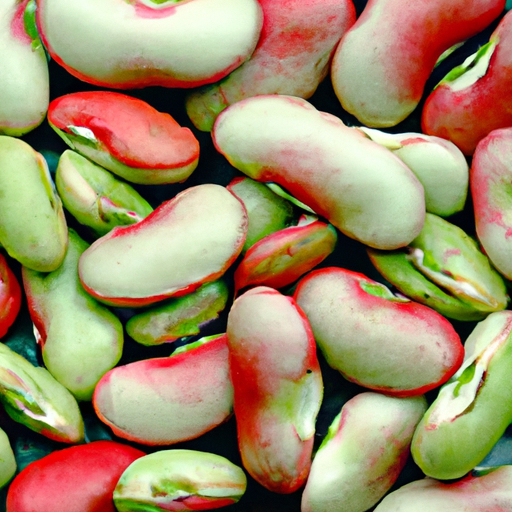Exploring Baby Lima Beans: A Petite Delight for Your Palate
If you’re on the lookout for a versatile and nutritious legume to incorporate into your cooking, look no further than the delightful baby lima bean. Known for its mild flavor and creamy texture, these petite legumes are packed with essential nutrients. Whether you’re a seasoned chef or a cooking enthusiast, baby lima beans can be a wonderful addition to a variety of recipes. Let’s dive into the world of baby lima beans and discover why they deserve a spot in your pantry!
Taste and Texture
Baby lima beans are delightfully tender and have a buttery, creamy flavor that is less starchy than their larger counterparts. They have a slightly nutty undertone that adds a subtle richness to dishes. The soft texture of these beans makes them a versatile ingredient that can be used in various ways.
Common Uses in Cooking
Baby lima beans lend themselves beautifully to both hearty and light dishes. Here are some popular ways to incorporate these petite legumes into your cooking repertoire:
- Soups and Stews: Baby lima beans are a cherished ingredient in comforting soups and stews. They add a wholesome creaminess and a burst of flavor to any bowl.
- Salads: These tiny beans can bring new dimensions to your salad creations. Whether tossed in a green salad or combined with other vegetables, baby lima beans offer a delightful bite.
- Sautéed: Sautéing baby lima beans with spices, herbs, and other vegetables can create a quick and delicious side dish.
- Purees and Dips: Baby lima beans can be blended into smooth purees or used to make creamy dips, providing a delectable base for various recipes.
Nutritional Value
Aside from their culinary versatility, baby lima beans are a nutrient powerhouse. Here are some key nutritional highlights:
- Protein: Baby lima beans are an excellent plant-based protein source, making them a valuable addition to vegetarian and vegan diets.
- Fiber: These beans are rich in dietary fiber, aiding in digestion and promoting a healthy gut.
- Vitamins and Minerals: Baby lima beans provide essential vitamins and minerals, including folate, iron, magnesium, and potassium.
- Low in Fat: With their natural low-fat content, baby lima beans make a satisfying and healthy ingredient, offering a guilt-free indulgence.
Fun Facts and History
- Baby lima beans, also known as butter beans, are believed to have originated in South America thousands of years ago. They have since become a staple in many cuisines worldwide.
- The term “butter bean” is often used interchangeably with “baby lima bean” to describe the same variety.
- In the American South, baby lima bean dishes have become iconic, with recipes handed down through generations, including classic preparations like hoppin’ John and succotash.
Now that you’ve learned about the taste, cooking uses, nutritional benefits, and fascinating facts about baby lima beans, it’s time to explore their potential in your own culinary adventures. These petite legumes have extraordinary abilities to elevate your dishes with their creamy texture and mild flavor. So why not pick up a bag of baby lima beans on your next trip to the store and let your creativity flow in the kitchen?
Sure! Here are some interesting facts about baby lima beans:
Origin: Baby lima beans, also known as butter beans, are native to Central and South America. They have been cultivated and consumed in these regions for thousands of years.
Common Uses: Baby lima beans are versatile and can be used in a variety of dishes. They are commonly used in soups, stews, casseroles, and salads. They can also be pureed into dips or mashed as a side dish. In some cultures, it is traditional to cook baby lima beans in a pot with pork or ham for added flavor.
Nutritional Benefits: Baby lima beans are a good source of plant-based protein, fiber, and essential minerals such as potassium and magnesium. They are low in fat and cholesterol-free. The high fiber content of baby lima beans can help support digestive health and promote healthy blood sugar levels.
Unique Properties: Baby lima beans are known for their creamy texture and slightly sweet taste. They have a smooth, buttery consistency when cooked properly. Unlike mature lima beans, baby lima beans have a more delicate flavor and require less cooking time.
Historical Significance: Lima beans have a long history, dating back to ancient times. They were a staple crop for indigenous cultures in the Americas, including the Incas and Mayans. Lima beans were introduced to Europe by explorers and have since become a popular ingredient in various cuisines around the world.
Remember to always cook dried or raw baby lima beans thoroughly to ensure they are safe to consume, as they contain a naturally occurring toxin called linamarin that can be harmful if not properly cooked.




Use the share button below if you liked it.
It makes me smile, when I see it.